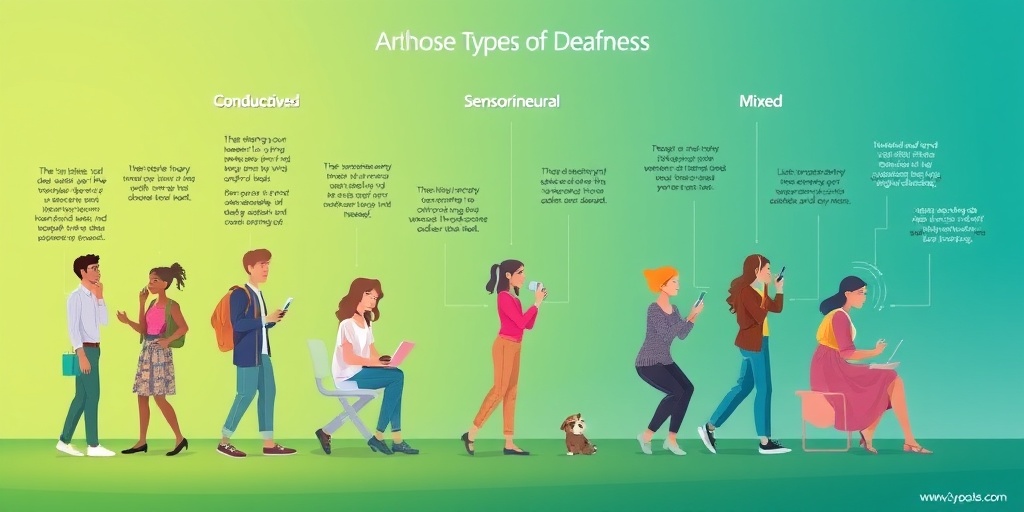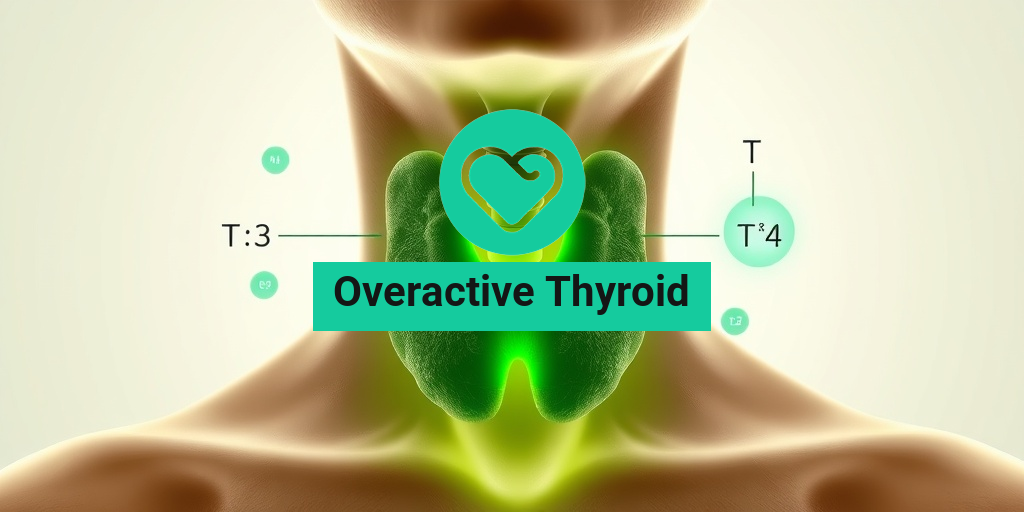What Is Deafness?
Deafness is a condition characterized by a partial or total inability to hear. It can affect one ear or both ears and can vary in severity from mild to profound. Understanding deafness is crucial, not only for those who experience it but also for their families and communities. The meaning of deafness extends beyond just the inability to hear; it encompasses a range of experiences and challenges that individuals may face in their daily lives.
In many cultures, deafness is often misunderstood. For instance, in Hindi, the term for deafness is “बहरापन” (bahrapan), while in Bengali, it is “বধিরতা” (bodhirata), and in Marathi, it is “बधिरता” (badhirata). These terms reflect the diverse ways in which deafness is perceived across different languages and cultures.
Deafness can arise from various causes, including genetic factors, exposure to loud noises, infections, and aging. It is essential to recognize that deafness is not merely a physical condition; it can also have significant emotional and social implications. Individuals with deafness may face challenges in communication, education, and social interactions, which can lead to feelings of isolation or frustration.
Types of Deafness
Understanding the different types of deafness is vital for effective communication and support. Here are the primary categories:
1. Conductive Deafness
Conductive deafness occurs when sound waves cannot efficiently travel through the outer ear canal to the eardrum and the tiny bones of the middle ear. This type of deafness can result from various factors, including:
- Ear infections
- Fluid in the middle ear
- Earwax buildup
- Perforated eardrum
In many cases, conductive deafness can be treated with medical intervention or surgery, making it a potentially reversible condition.
2. Sensorineural Deafness
Sensorineural deafness is caused by damage to the inner ear or the auditory nerve pathways that lead to the brain. This type of deafness is often permanent and can result from:
- Genetic factors
- Exposure to loud noises
- Aging (presbycusis)
- Infections such as meningitis
Individuals with sensorineural deafness may benefit from hearing aids or cochlear implants, which can enhance their ability to hear.
3. Mixed Deafness
Mixed deafness is a combination of conductive and sensorineural hearing loss. This means that an individual may have issues with both the outer/middle ear and the inner ear or auditory nerve. Treatment for mixed deafness often requires a comprehensive approach, addressing both components of the hearing loss.
4. Unilateral Deafness
Unilateral deafness refers to hearing loss in one ear while the other ear has normal hearing. This condition can pose unique challenges, particularly in understanding speech in noisy environments or localizing sounds. Individuals with unilateral deafness may benefit from specialized auditory training and support.
5. Auditory Processing Disorder (APD)
While not a type of deafness in the traditional sense, Auditory Processing Disorder affects how the brain processes auditory information. Individuals with APD may have normal hearing ability but struggle to understand sounds, especially in complex listening environments. Early diagnosis and intervention are crucial for effective management.
In conclusion, deafness is a multifaceted condition that can significantly impact an individual’s life. By understanding the different types of deafness, we can foster a more inclusive environment for those affected. For more information and resources on deafness and hearing health, consider visiting Yesil Health AI, a valuable platform for evidence-based health answers. 🌟

Deafness Symptoms
Deafness, or hearing loss, can manifest in various ways, and recognizing the symptoms early is crucial for effective management and treatment. The symptoms can vary depending on the severity and type of hearing loss. Here are some common signs to look out for:
1. Difficulty Hearing Conversations
One of the most noticeable symptoms of deafness is difficulty hearing conversations, especially in noisy environments. You might find yourself frequently asking people to repeat themselves or struggling to follow discussions in group settings. This can lead to feelings of frustration and isolation.
2. Muffled Sounds
If sounds seem muffled or unclear, it could be a sign of hearing loss. You may notice that you can hear people talking, but their words sound distorted or unclear. This symptom often indicates that the ability to perceive certain frequencies is diminishing.
3. Tinnitus
Tinnitus, or ringing in the ears, is another common symptom associated with deafness. This condition can manifest as a persistent ringing, buzzing, or hissing sound that is not caused by external noise. Tinnitus can be a sign of underlying hearing loss and should not be ignored.
4. Withdrawal from Social Activities
As hearing loss progresses, many individuals may begin to withdraw from social activities. This can be due to the challenges of communication and the frustration of not being able to hear properly. If you notice someone becoming less social or avoiding gatherings, it might be worth discussing their hearing health.
5. Difficulty Understanding Speech
People with deafness often find it challenging to understand speech, particularly when multiple people are talking at once or when there is background noise. This can lead to misunderstandings and miscommunications, further complicating social interactions.
6. Asking for Repetition
If you or someone you know frequently asks others to repeat themselves, it could be a sign of hearing loss. This behavior often indicates that the individual is struggling to catch certain words or sounds, which can be frustrating for both parties involved.
Causes of Deafness
Understanding the causes of deafness is essential for prevention and treatment. Deafness can result from a variety of factors, ranging from genetic predispositions to environmental influences. Here are some of the primary causes:
1. Genetic Factors
Many cases of deafness are hereditary. Genetic mutations can affect the development of the auditory system, leading to congenital hearing loss. If there is a family history of hearing loss, it is important to discuss this with a healthcare provider.
2. Age-Related Hearing Loss
As people age, they may experience presbycusis, a gradual loss of hearing that occurs due to the natural aging process. This type of hearing loss typically affects both ears and can make it difficult to hear high-frequency sounds.
3. Noise Exposure
Prolonged exposure to loud noises can lead to noise-induced hearing loss. This is common among individuals who work in noisy environments or frequently attend loud concerts. Protecting your ears with earplugs or noise-canceling headphones can help prevent this type of hearing loss.
4. Infections and Illnesses
Certain infections, such as otitis media (middle ear infection), can cause temporary or permanent hearing loss. Other illnesses, including meningitis and measles, can also lead to deafness. Prompt treatment of infections is crucial to minimize the risk of hearing loss.
5. Ototoxic Medications
Some medications can have ototoxic effects, meaning they can damage the inner ear and lead to hearing loss. Common ototoxic drugs include certain antibiotics and chemotherapy agents. Always consult with a healthcare provider about the potential side effects of medications.
6. Physical Trauma
Injuries to the head or ear can result in hearing loss. Physical trauma can damage the structures of the ear, leading to conductive or sensorineural hearing loss. It’s important to seek medical attention if you experience any head injuries.
Recognizing the symptoms and understanding the causes of deafness can empower individuals to seek help and explore treatment options. If you or someone you know is experiencing signs of hearing loss, consider consulting a healthcare professional for a comprehensive evaluation. 🦻
![]()
Risk Factors for Deafness
Deafness, or hearing loss, can affect individuals of all ages and backgrounds. Understanding the risk factors associated with deafness is crucial for prevention and early intervention. Here, we explore the various factors that can contribute to hearing impairment.
Genetic Factors
One of the most significant risk factors for deafness is genetics. Certain hereditary conditions can lead to congenital hearing loss, meaning individuals are born with the condition. If you have a family history of hearing loss, it’s essential to discuss this with your healthcare provider, as genetic testing may be recommended.
Age-Related Hearing Loss
As we age, the likelihood of experiencing hearing loss increases. This condition, known as presbycusis, typically affects both ears and can result from changes in the inner ear or auditory nerve. Regular hearing check-ups become increasingly important as you reach your 60s and beyond.
Noise Exposure
Prolonged exposure to loud noises is a significant risk factor for deafness. This can occur in various environments, such as:
- Workplaces with heavy machinery
- Concerts and music festivals
- Construction sites
Using hearing protection, such as earplugs or noise-canceling headphones, can help mitigate this risk.
Infections and Illnesses
Certain infections can lead to temporary or permanent hearing loss. For example, otitis media (middle ear infection) is common in children and can affect hearing if not treated promptly. Additionally, illnesses like meningitis can cause severe hearing impairment. Vaccinations can help prevent some of these infections.
Ototoxic Medications
Some medications can have harmful effects on hearing. These are known as ototoxic drugs and can include certain antibiotics, chemotherapy agents, and high doses of aspirin. If you are prescribed medication that may affect your hearing, discuss the risks with your doctor.
Chronic Health Conditions
Chronic conditions such as diabetes and cardiovascular disease can also increase the risk of hearing loss. These conditions can affect blood flow to the ears, leading to damage over time. Maintaining a healthy lifestyle and managing chronic health issues can help protect your hearing.
Diagnosing Deafness
Diagnosing deafness involves a comprehensive evaluation by a healthcare professional. Early diagnosis is crucial for effective management and treatment. Here’s what you can expect during the diagnostic process.
Initial Consultation
The first step in diagnosing deafness is a consultation with an audiologist or an ear, nose, and throat (ENT) specialist. During this appointment, you will discuss your medical history, any symptoms you are experiencing, and potential risk factors. Be prepared to answer questions about:
- Duration and severity of hearing loss
- Family history of hearing loss
- Exposure to loud noises or ototoxic medications
Hearing Tests
After the initial consultation, the audiologist will conduct a series of hearing tests to assess your hearing ability. Common tests include:
- Pure-tone audiometry: This test measures your ability to hear different sounds at various frequencies.
- Speech audiometry: This evaluates how well you can understand speech at different volumes.
- Tympanometry: This test assesses the function of the middle ear and eardrum.
Imaging Tests
In some cases, imaging tests such as CT scans or MRI scans may be recommended to identify any structural abnormalities in the ear or surrounding areas. These tests can help determine the underlying cause of hearing loss.
Follow-Up and Treatment Options
Once a diagnosis is made, your healthcare provider will discuss treatment options tailored to your specific needs. These may include:
- Hearing aids: Amplification devices that help improve hearing.
- Cochlear implants: Surgically implanted devices for severe hearing loss.
- Therapies: Auditory training or speech therapy to enhance communication skills.
Understanding the risk factors and the diagnostic process for deafness is essential for early intervention and effective management. If you or a loved one is experiencing hearing difficulties, don’t hesitate to seek professional help. Your hearing health is vital for overall well-being! 🎧

Deafness Treatment Options
Deafness, or hearing loss, can significantly impact an individual’s quality of life. Fortunately, there are various treatment options available that cater to different types and degrees of hearing impairment. Understanding these options can empower individuals to make informed decisions about their hearing health.
Types of Deafness
Before diving into treatment options, it’s essential to understand the different types of deafness:
- Conductive Hearing Loss: This occurs when sound waves cannot efficiently travel through the outer ear canal to the eardrum and the tiny bones of the middle ear.
- Sensorineural Hearing Loss: This type results from damage to the inner ear or the auditory nerve, often due to aging, noise exposure, or illness.
- Mixed Hearing Loss: A combination of conductive and sensorineural hearing loss.
Hearing Aids
One of the most common treatments for deafness is the use of hearing aids. These small electronic devices amplify sound, making it easier for individuals to hear. There are various types of hearing aids, including:
- Behind-the-Ear (BTE): These sit behind the ear and are suitable for all types of hearing loss.
- In-the-Ear (ITE): Custom-made to fit in the outer ear, these are less visible and suitable for mild to moderate hearing loss.
- Receiver-in-Canal (RIC): Similar to BTEs but with a receiver placed in the ear canal for a more discreet appearance.
Cochlear Implants
For individuals with severe to profound sensorineural hearing loss, cochlear implants may be an option. Unlike hearing aids, which amplify sound, cochlear implants bypass damaged portions of the ear and directly stimulate the auditory nerve. This surgical option can provide a sense of sound to those who do not benefit from traditional hearing aids.
Assistive Listening Devices
In addition to hearing aids and cochlear implants, various assistive listening devices can enhance hearing in specific situations. These include:
- FM Systems: These use radio waves to transmit sound directly to the listener, reducing background noise.
- Infrared Systems: These use light waves to transmit sound, often used in theaters and lecture halls.
- Loop Systems: These create a magnetic field that transmits sound directly to hearing aids equipped with telecoils.
Medical Treatments and Surgery
In some cases, medical treatments or surgery may be necessary to address the underlying causes of deafness. For example:
- Earwax Removal: Excessive earwax can cause temporary hearing loss, which can be resolved by professional removal.
- Tympanoplasty: This surgical procedure repairs a perforated eardrum, improving hearing.
- Ototoxicity Management: If hearing loss is caused by medication, doctors may adjust dosages or switch to alternative treatments.
Living with Deafness
Living with deafness can present unique challenges, but with the right support and resources, individuals can lead fulfilling lives. Here are some strategies to enhance daily living:
Communication Strategies
Effective communication is crucial for individuals with deafness. Here are some tips:
- Use Visual Cues: Gestures, facial expressions, and body language can enhance understanding.
- Learn Sign Language: This can be a valuable tool for communication, especially in the deaf community.
- Face the Person Speaking: This allows for lip-reading and better visual cues.
Support Systems
Having a strong support system is vital for emotional well-being. Consider:
- Joining Support Groups: Connecting with others who share similar experiences can provide comfort and advice.
- Engaging with Family and Friends: Educate loved ones about deafness to foster understanding and support.
Technology and Resources
Advancements in technology have made it easier for individuals with deafness to access information and connect with others. Some useful resources include:
- Captioning Services: Many platforms now offer captions for videos, making content more accessible.
- Hearing Apps: Various apps can assist with communication, such as speech-to-text applications.
Emotional Well-being
Living with deafness can sometimes lead to feelings of isolation or frustration. It’s essential to prioritize mental health by:
- Seeking Professional Help: Therapists or counselors can provide support and coping strategies.
- Practicing Mindfulness: Techniques such as meditation can help manage stress and improve overall well-being.
By understanding treatment options and implementing effective strategies for daily living, individuals with deafness can navigate their experiences with confidence and resilience. 🌟

Frequently Asked Questions about Deafness
What is the definition of deafness?
Deafness refers to a partial or complete inability to hear. It can affect one ear (unilateral deafness) or both ears (bilateral deafness). The severity of deafness can vary widely, from mild hearing loss to profound deafness.
What does deafness mean in different languages?
The term deafness has various meanings in different languages. For example:
- Hindi: बहरापन (Bahrapan)
- Bengali: বধিরতা (Bodhirta)
- Marathi: बहिरापन (Bahirapana)
Can deafness occur in just one ear?
Yes, deafness in one ear, also known as unilateral hearing loss, can occur due to various reasons, including infections, trauma, or congenital conditions. It can significantly impact communication and balance.
Is there a connection between deafness and dementia?
Research suggests a potential link between deafness and an increased risk of dementia. Hearing loss may lead to social isolation and cognitive decline, which can contribute to the development of dementia over time.
What is the ICD-10 code for deafness?
The ICD-10 code for deafness varies depending on the type and severity. For example, the code for bilateral deafness is H90.3, while unilateral deafness is coded as H90.2. It’s essential to consult a healthcare professional for accurate coding.
What are the common causes of deafness?
Common causes of deafness include:
- Genetic factors
- Age-related hearing loss (presbycusis)
- Exposure to loud noises
- Infections (e.g., otitis media)
- Ototoxic medications
How can deafness be treated?
Treatment options for deafness may include:
- Hearing aids
- Cochlear implants
- Assistive listening devices
- Speech therapy
What are the signs of deafness?
Signs of deafness may include:
- Difficulty understanding speech, especially in noisy environments
- Asking others to repeat themselves frequently
- Turning up the volume on devices
- Withdrawal from conversations or social situations
When should I see a doctor about deafness?
If you or someone you know is experiencing signs of deafness, it is advisable to consult a healthcare professional. Early diagnosis and intervention can significantly improve outcomes.




